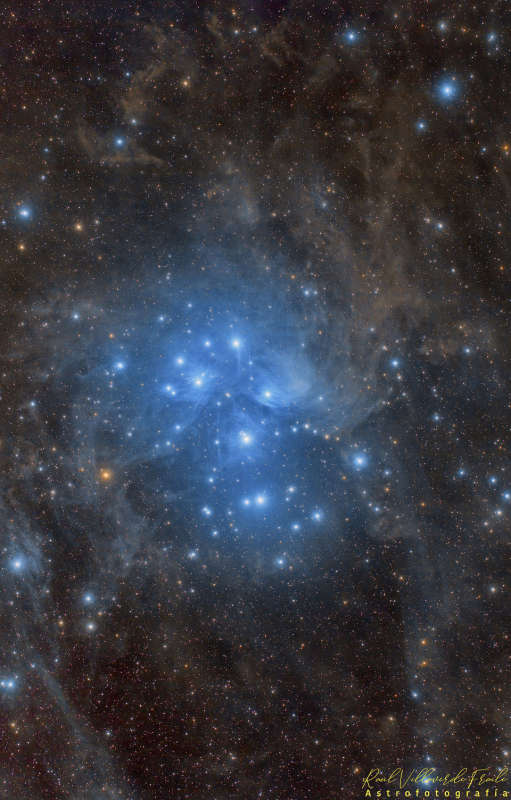
|
Credit & Copyright: Raul Villaverde Fraile
Explanation:
Have you ever seen the Pleiades star cluster?
Even if you have, you probably have never seen it as large and clear as this.
Perhaps the most famous star cluster on the sky, the bright stars of the
Pleiades
can be seen without binoculars from even the depths of a
light-polluted city.
With a long exposure from a dark location, though, the dust cloud surrounding the
Pleiades star
cluster becomes very evident.
The featured exposure covers a
sky area several times the size of the full
moon.
Also known as the Seven Sisters and
M45,
the Pleiades lies about 400 light years away toward the constellation of the
Bull
(Taurus).
A common legend
with a
modern twist is that one of the brighter
stars faded since the cluster was named, leaving only
six of the sister stars visible to the unaided eye.
The actual number of
Pleiades stars visible,
however, may be more or less than seven, depending on the
darkness of the surrounding sky and the
clarity of the observer's eyesight.
Teachers & Students:
Ideas for utilizing APOD in the classroom.
|
January February March April May June July August September October November December |
| ||||||||||||||||||||||||||||||||||||||||||||||||
NASA Web Site Statements, Warnings, and Disclaimers
NASA Official: Jay Norris. Specific rights apply.
A service of: LHEA at NASA / GSFC
& Michigan Tech. U.
Based on Astronomy Picture
Of the Day
Publications with keywords: pleiades - M 45
Publications with words: pleiades - M 45
See also:
